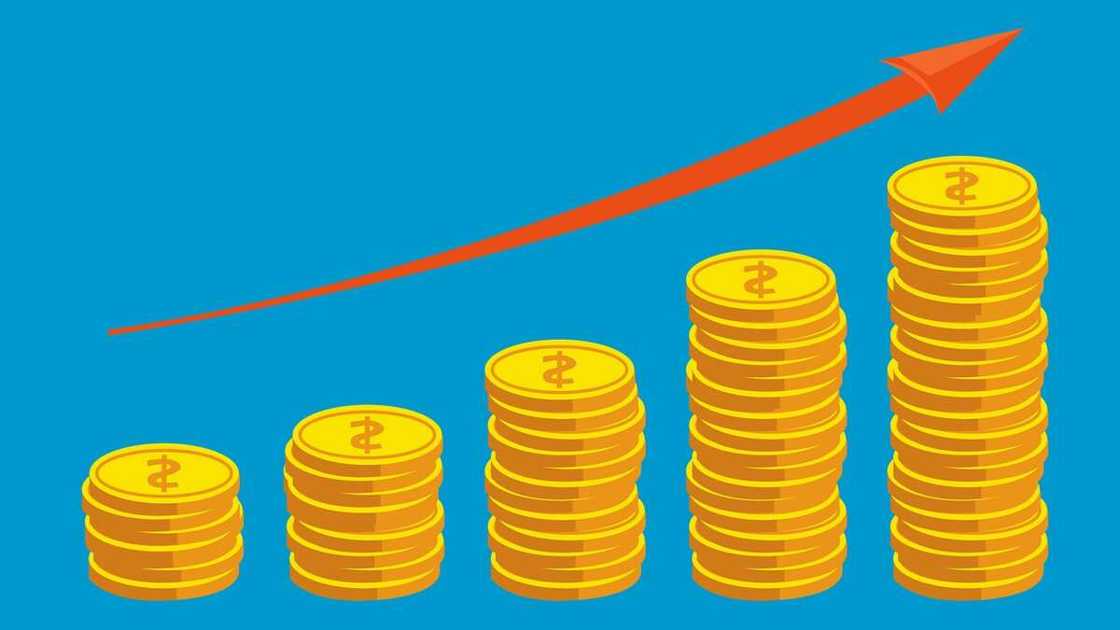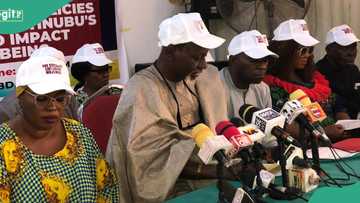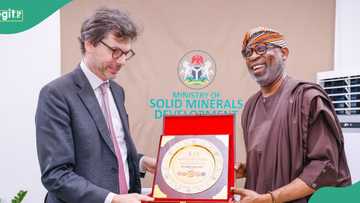Structural Adjustment Programme in Nigeria: objectives, effects, and impact
A Structural Adjustment Programme (SAP) is a series of economic policies/reforms a country must adopt for it to access loans from the World Bank (WB) and the International Monetary Fund (IMF). The 1986 Structural adjustment programme in Nigeria had great intentions and potential but did not work as expected. This article explains its objectives, effects, and impact on the country.

Source: UGC
The IMF and WB were established in 1944 after the Great Depression of the 1930s to lend money to the governments of its poorer member countries. The loans are supposed to improve the economies of the poorer member countries and improve their people's living standards. However, these countries must adhere to the Structural Adjustment Programmes (SAPs) the IMF and WB prescribes to get financial assistance or loans.
What is the Structural Adjustment Programme?
A Structural Adjustment Programme (SAP) is a policy prescribed by the International Monetary Fund (IMF) and the World Bank to developing countries that need loans or financial assistance. The programme aims to help the developing nation become more competitive globally.
Who introduced the Structural Adjustment Programme in Nigeria, and when?
Former Nigerian president Ibrahim Babangida, the World Bank (WB), and the International Monetary Fund (IMF) introduced the Structural Adjustment Programme (SAP) in Nigeria in 1986. The programme reformed Nigeria's trade policies, foreign exchange system, and business and agricultural regulations.
For Nigeria to overcome inflation, stop excessive public spending and exchange rate depreciation, and become a developing country, the government had to adopt most of the measures suggested by the SAP. Although Nigeria eventually placed itself on the right path to achieving sustainable economic growth and poverty reduction, the SAP also harmed the country.

Source: UGC
The history of the structural adjustment programme in Nigeria
Nigeria struggled to keep its economy afloat after attaining independence in 1960. The country's economy relied heavily on oil production and mineral exports, bringing quick and easy money.
Within a few years, oil prices collapsed to less than $10 per barrel. In 1969, the oil sector accounted for less than 3% of Nigeria's GDP, and more than half of GDP came from the agricultural industry. Therefore, the country shifted its focus to agriculture and manufacturing to support its stagnating economy.
Since the government's sources of income did not generate enough money to develop the agriculture and manufacturing sectors, they turned to the World Bank (WB) and the International Monetary Fund (IMF) for financial assistance.
Eventually, in 1986, Nigeria's then-president Ibrahim Babangida adopted a Structural Adjustment Programme recommended by the IMF and WB. The supposedly two-year programme was to be terminated in 1998 after achieving its objectives.
Nevertheless, the Nigerian government extended the Structural Adjustment Programme to 1993, when its benefits outweighed its disadvantages. The country still uses IMF and World Bank's recommended SAPs.
What were the objectives of the Structural Adjustment Programme?
The Structural Adjustment Programme of 1986 introduced short-term solutions to improve the country's economy in the long run. Below were the objectives of the SAP Nigeria embraced in 1986:
- To stimulate and promote economic growth.
- To reduce poverty and improve people's living standards.
- The restructure and diversify the economy's productive base.
- To reduce Nigeria's dependency on mineral exports and the oil sector.
- To improve agricultural productivity in Nigeria.
- To reduce inflation yearly.
- To increase government revenue by expanding the tax base.
- To improve resource allocation and utilization for sustainable economic development.
- To commercialize and privatize government-owned enterprises and use the private sector as the engine of economic growth.

Source: UGC
The Federal Republic of Nigeria developed key programmes and policies designed to help the country improve its economy. According to the 1986 Structural Adjustment Programme, the government had to implement these policies:
- Update and strengthen its government management policies.
- Adopt measures that would expand the country's revenue/tax base.
- Adopt mechanisms that would boost domestic production.
- Set up a Second-Tier Foreign Exchange Market (SFEM).
- To rationalize and restructure the tariffs to promote industrial diversification.
- Adopt measures that would liberalize external trade and payments.
- Eliminate trade/price controls and commodity boards.
- Adopt mechanisms that would eliminate the government's control over interest rates.
- Rationalize and restructure the overhaul of the administrative structures in the public sector.
The government of Nigeria also established the following programmes and public agencies to help the country achieve the 1986 SAP objectives:
- The National Directorate of Employment (NDE) in 1986
- A SAP relief package in 1989
- The Urban Mass Transit Programme in 1988
- The People's and Community Banks in 1989/90
- The Directorate of Food, Road and Rural Infrastructure (DFRRI) in 1986
- A reflationary budget package in 1988
- The 1991/1992 relief package for public sector officers
- Reforms of the civil service in 1989
- The Better Life for Rural Dwellers' Programme in 1989

Source: UGC
Advantages and disadvantages of the Structural Adjustment Programme in Nigeria
Nigeria experienced several advantages and disadvantages after implementing the Structural Adjustment Programme recommended by the World Bank (WB) and the International Monetary Fund (IMF) in 1986. Below are the pros and cons the programme had on the country:
The positive impact of the structural adjustment programme in Nigeria
The Structural Adjustment Programme in Nigeria recorded mixed performance by 1995. Below are some of the positive effects the programme had on the country:
- Nigeria's economy revered the negative GDP growth trend and rose by 5%.
- Agriculture, oil production, manufacturing, and other key sectors of the economy improved.
- The government and the people could easily access the foreign exchange market.
- Resource allocation was efficient in the most productive sectors.
- The country had successful debt rescheduling and debt conversion programmes.
- There was an evolution of administration and maintenance culture in both public and private entities.
- The government adopted local technology and recycled used materials.
The adverse effects of the Structural Adjustment Programme in Nigeria
Despite the benefits the 1986 SAP had on Nigeria's economy, it did not address all the country's economic issues. Besides, the programme also caused some problems in Nigeria. Below are some of the negative effects of the 1986 SAP on the country:
- The 1986 SAP only benefited some people. — While people in the living standards of rural areas improved, life for middle-class Nigerians and civil servants worsened. The government reduced the expenditures on the social infrastructure to keep the fiscal policy in check, unaware that this would reduce people's wages and worsen their living standards.
- SAP was working but at a slow pace. — Inflation level barely improved. Nigeia's per capita income rose by 2% annually, meaning it would take at least thirty years for the economy to reach its 1980 level. Meanwhile, the Naira depreciated up to 80% against the U.S. dollar.
- Corruption increased in government. — Corrupt politicians, including the president and members of his inner circle, created policies that benefitted from them at the expense of the people. For instance, they would steal from the IMF and World Bank loans meant for public development. As a result, civil unrest and protests increased in Nigeria.
- Military interventions increased in Nigeria. — The high levels of corruption and embezzlement of public funds from the IMF and World Bank enticed politicians and the military to overthrow the government. Many only wanted power and influence to enable them to enjoy a piece of the cake.
- Inflation skyrocketed when the government loosened the fiscal policy. — Inflation was erratic, jumping from 16% to 55% in 1987-1988, dropping to 7% in 1990, and going back to 50% in 1992.
- Nigeria's debt to the WB and IMF pilled up quickly. — By 1993, it amounted to half of the total expenditure, coming at ₦51,616.9 million; every new regime borrowed from the IMF and World Bank than it could repay.

Source: UGC
What led to the introduction of the Structural Adjustment Programme?
The Babangida regime introduced the Structural Adjustment Programme on Friday, 27th June 1986, to revamp the country's failing economy after Nigeria declared a state of economic emergency in October 1985.
Why did the Structural Adjustment Programme fail in Nigeria?
Higher interest rates on IMF and World Bank loans, high taxes in Nigeria, recession, and unemployment are reasons the Structural Adjustment Programme failed in Nigeria.
What are the negative effects of SAP in developing countries?
SAPs can increase corruption activities legitimized by anti-corruption discourses. Since the phase of implementation of an SAP is vulnerable to corruption, a country's corruption level can influence its success.
Why have the World Bank's Structural Adjustment Programmes been criticized?
Many argue that the Structural Adjustment Programmes the World Bank and IMF imposed on African countries were never designed to facilitate development but to keep those countries economically dependent and vulnerable.

Read also
Tinubu's govt commended for economic policy, plans for Nigeria, “After an extensive scrutiny"
What is the problem with SAPs?
SAPs the World Bank and IMF imposed on African countries increase poverty, food insecurity and malnutrition, ill-health, decreased access to health care, and limit economic growth.
The 1869 Structural Adjustment Programme in Nigeria was not the best approach for the economic challenges the country was facing. The IMF, World Bank, and the Nigerian government may have had too much faith in it. Many believed these SAPs were too harsh and intrusive to African countries. Nigeria is among the many developing countries in Africa that took years to stabilize after adopting SAPs. Some are still repaying their debts.
Legit.ng shared a list of essential financial and non-financial farm records that small and large-scale farmers need. The article also explains the importance of each farm record.
Read on to learn about the daily farm activity journal, the workers' book/log, the farm equipment and inventory log, the agricultural input log, the animal feeds log, the sales record, the profit and loss book, and more.
Source: Legit.ng

Peris Walubengo (Lifestyle writer) Peris Walubengo has vast experience in search engine optimization through digital content generation, research, editing, and proofreading. She joined Legit.ng in April 2022 and completed the AFP course on Digital Investigation Techniques. You can email her at perisrodah254@gmail.com.

Adrianna Simwa (Lifestyle writer) Adrianna Simwa is a content writer at Legit.ng where she has worked since mid-2022. She has written for many periodicals on a variety of subjects, including news, celebrities, and lifestyle, for more than three years. She has worked for The Hoth, The Standard Group and Triple P Media. Adrianna graduated from Nairobi University with a Bachelor of Fine Arts (BFA) in 2020. In 2023, Simwa finished the AFP course on Digital Investigation Techniques. You can reach her through her email: adriannasimwa@gmail.com







